Abstract
1. A technique has been devised for recording unit activity in the anterior hypothalamus of conscious rabbits during the controlled displacement of local temperature by 1-2° C. The region at 1 and 2 mm from the mid line was explored.
2. All the units studied showed spontaneous activity before thermal stimulation with a mean rate of 9 impulses/sec (range 1/16 sec to 65/sec).
3. Twenty-seven (10%) of the recorded neurones showed a change in firing rate which could be related to the temperature changes. Twenty-one of the cells were `warm-sensitive' and were excited when temperature was raised or inhibited when it was lowered. The other six units were `cold-sensitive' and showed the opposite type of response.
4. Apart from this directional grouping, it was possible to classify the responses into four categories: A, five cells whose firing rate was always proportional to local temperature over a range from 2° C below to 2° C above body temperature; B, six cells whose average level of firing changed during the period of observation, but whose sensitivity to temperature was not affected; C, eight cells which showed a threshold and were only affected by temperature above or below a certain level; D, four cells whose changes in frequency either led or lagged behind the temperature changes.
5. The positions of these sensitive units in the hypothalamus did not show any apparent pattern, except that 75% of them were found 1 mm lateral to the mid line; the remaining 25% were 2 mm lateral.
Full text
PDF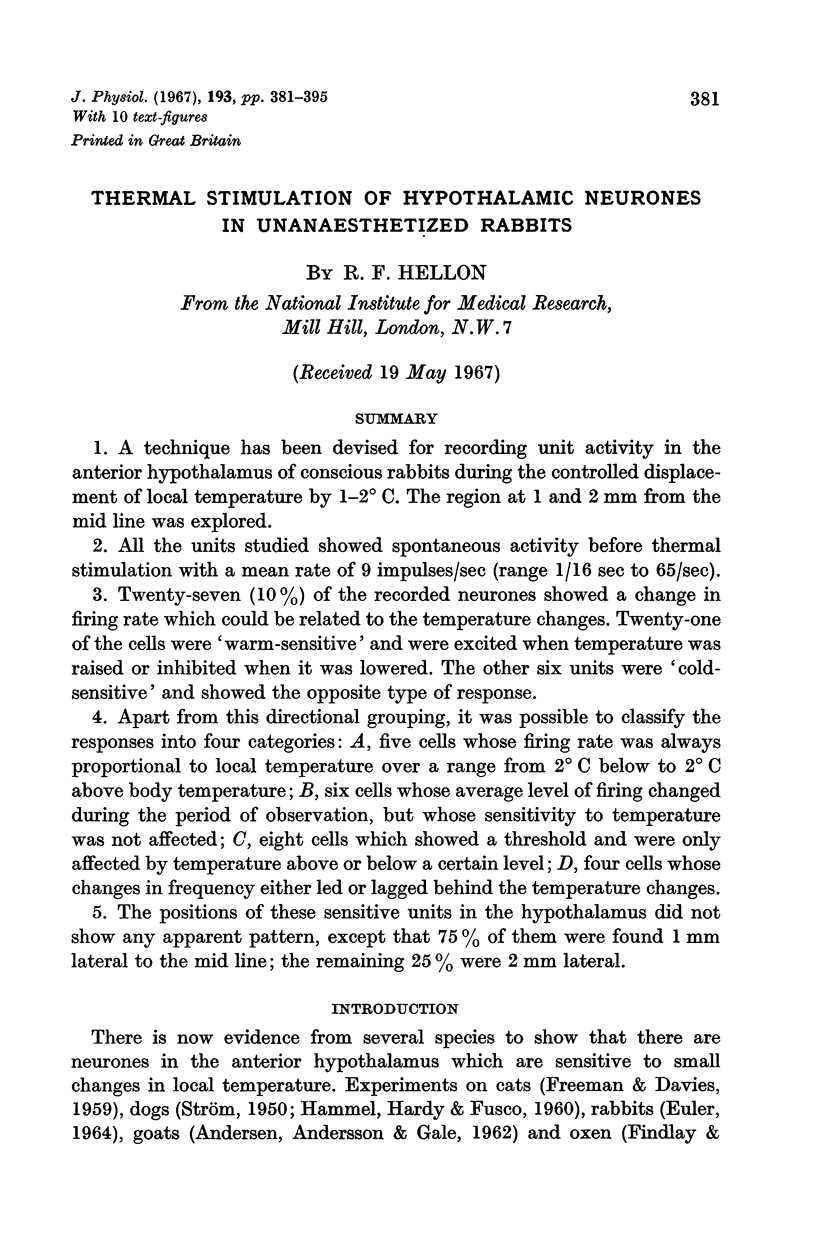
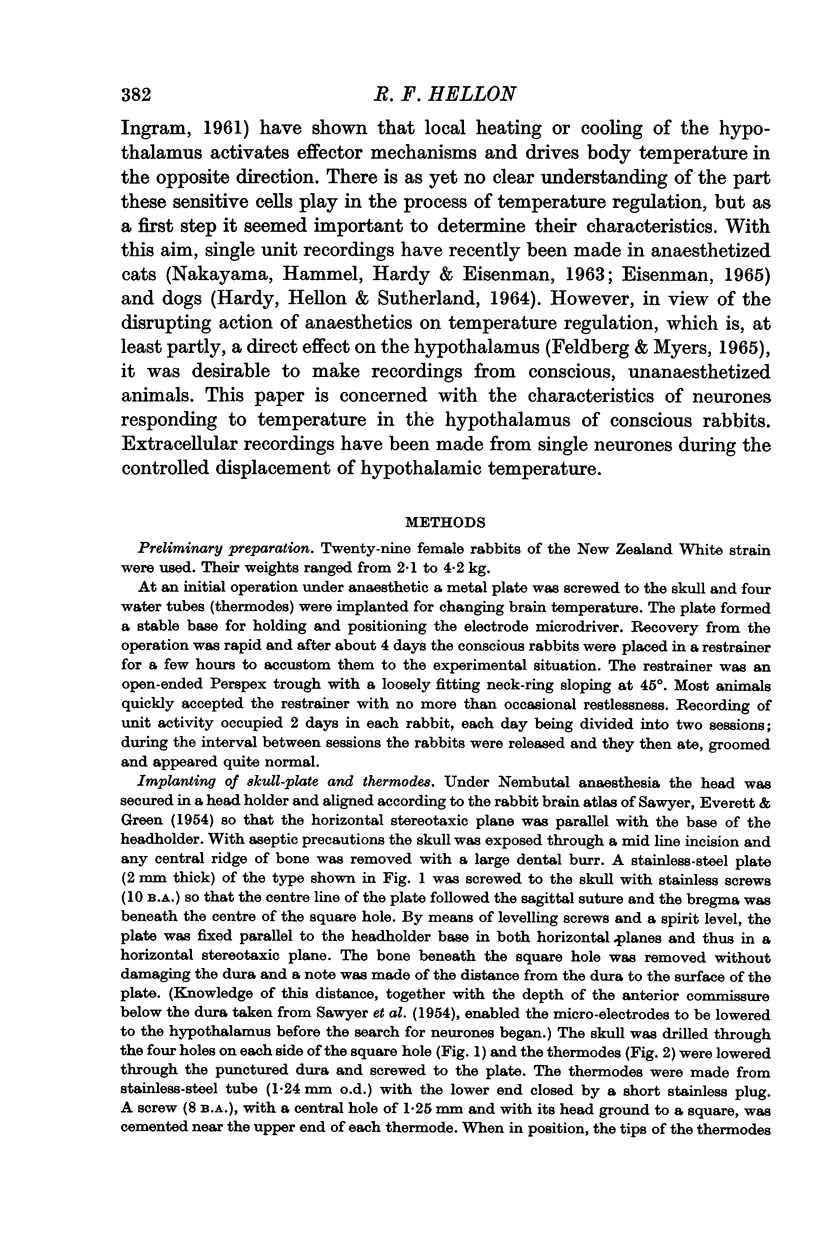
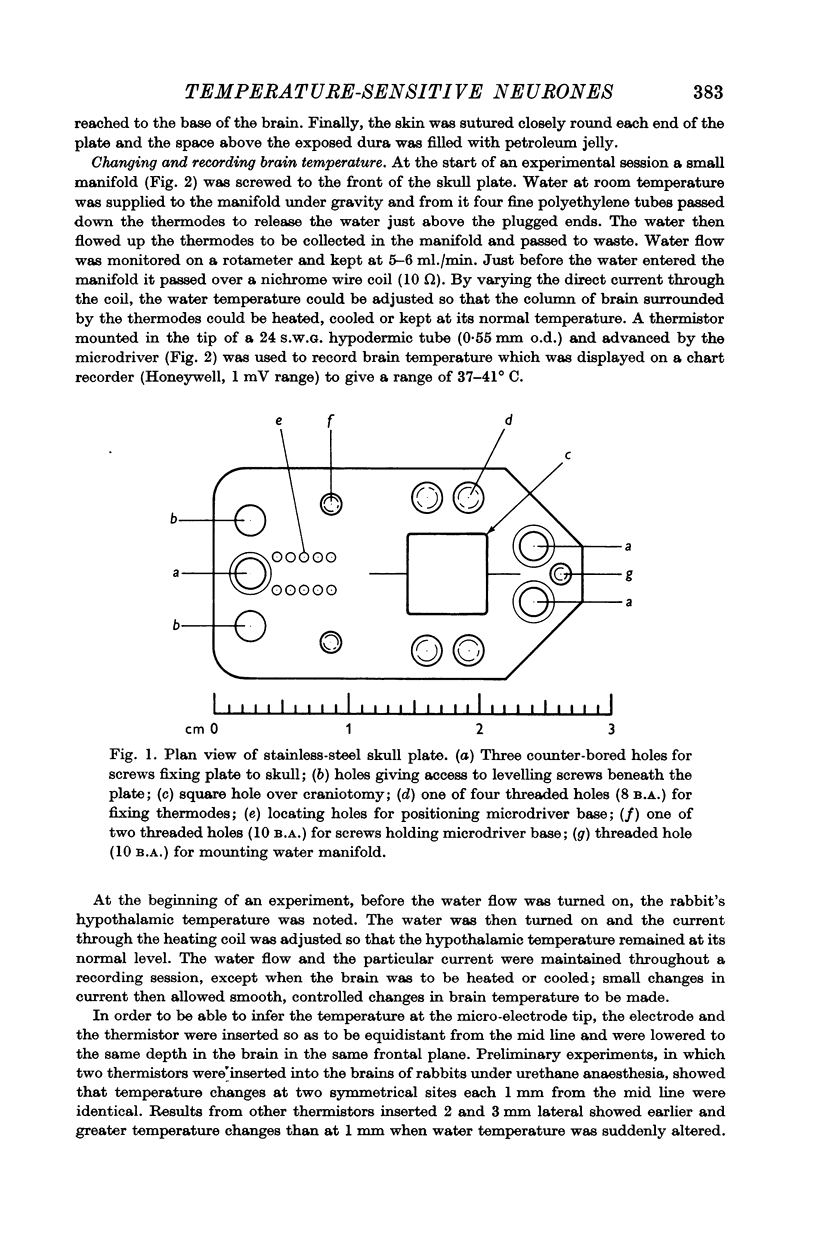
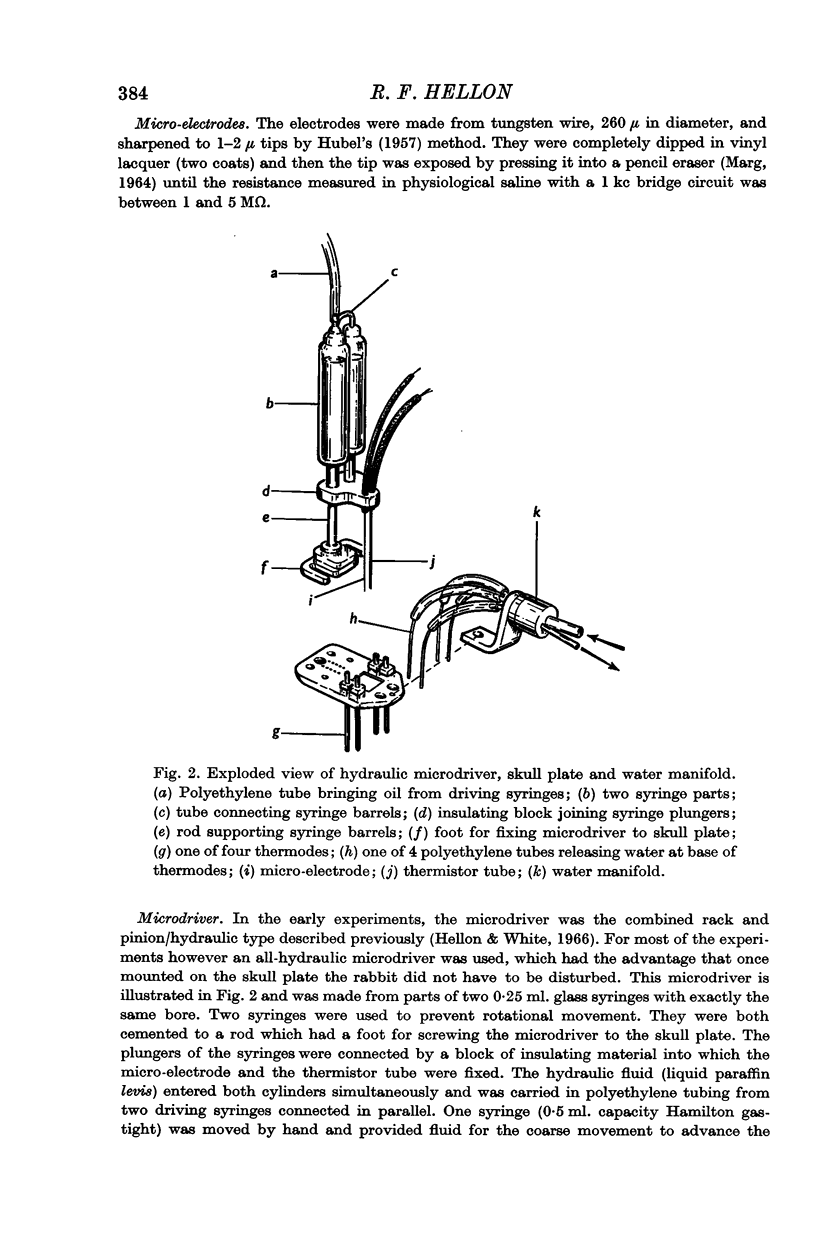
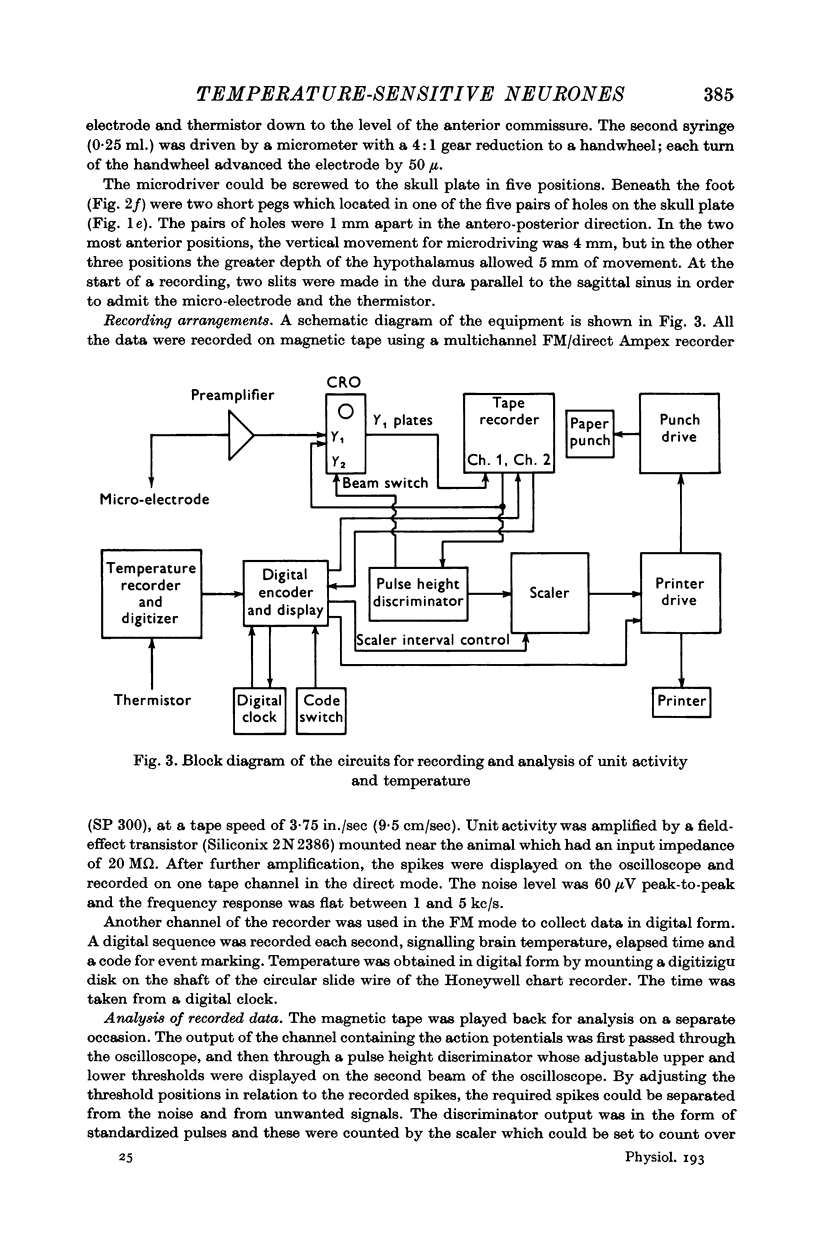
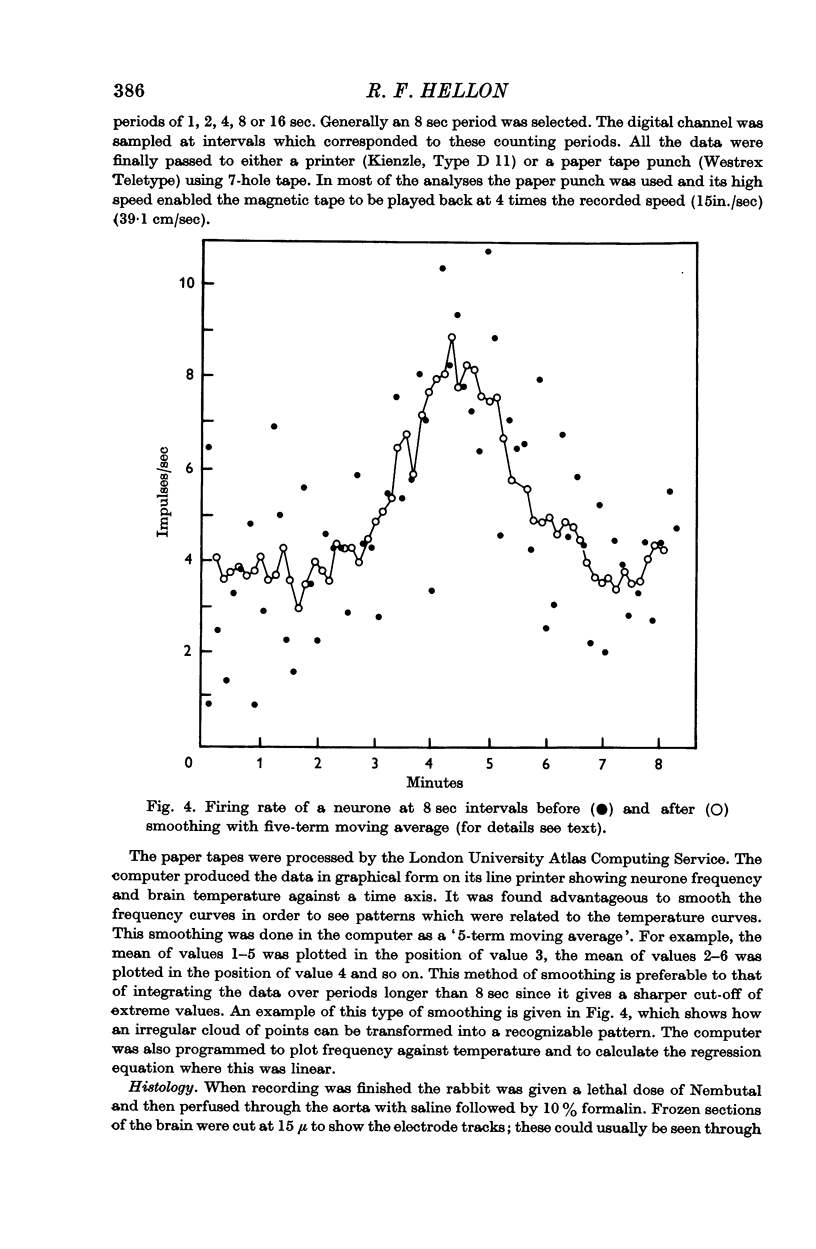
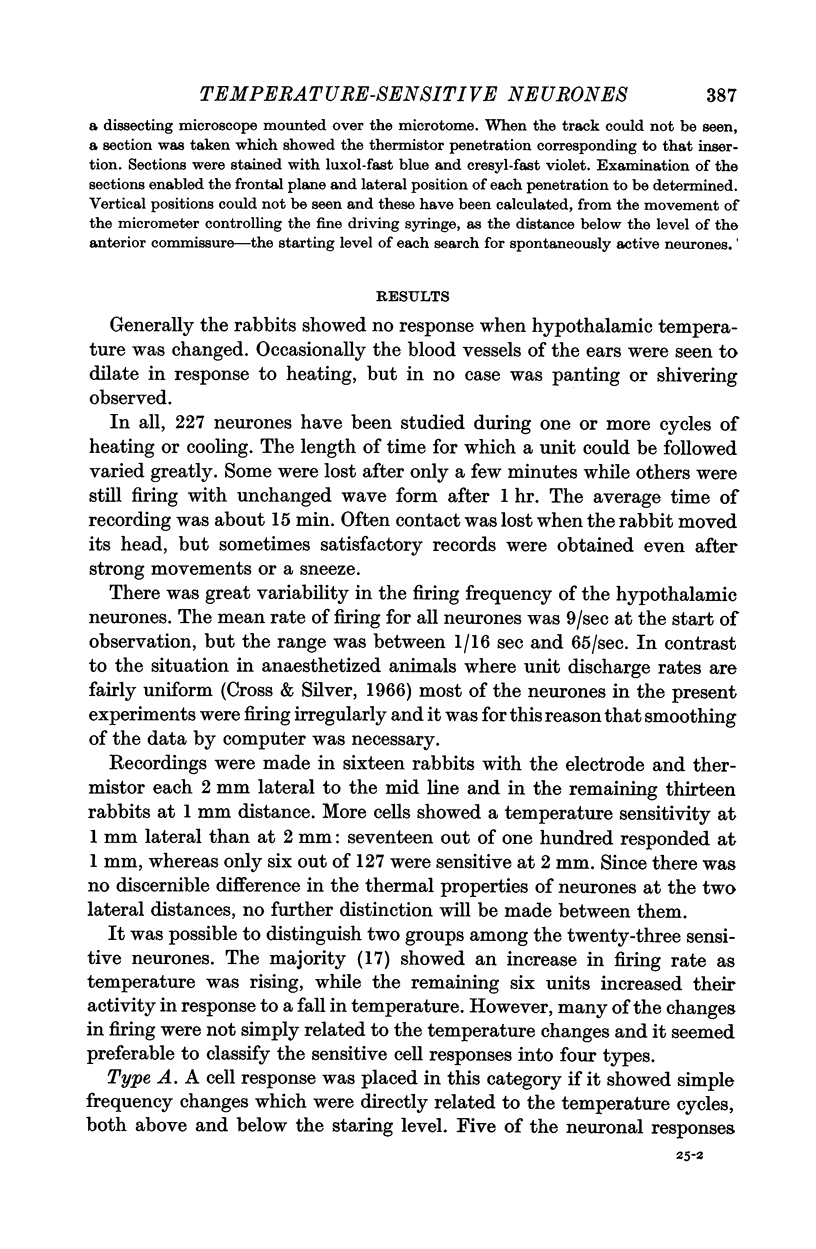
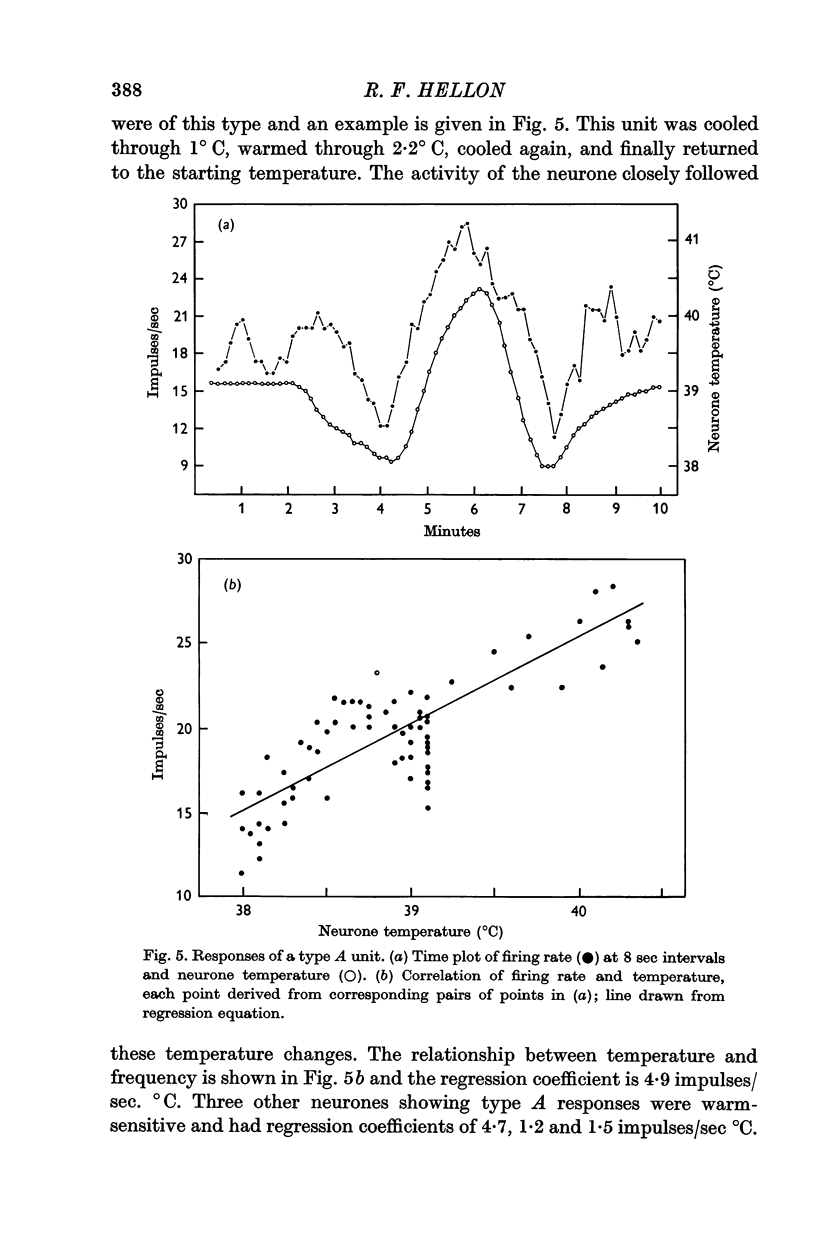
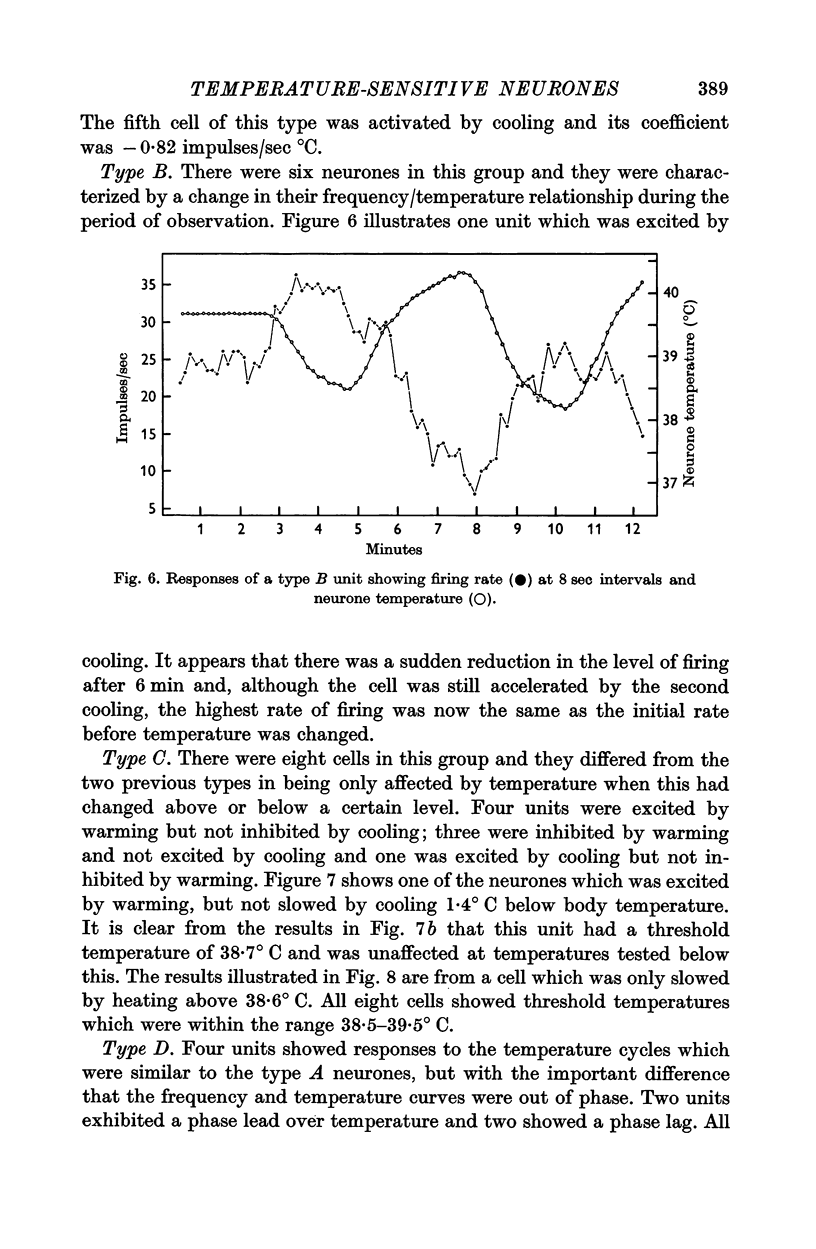
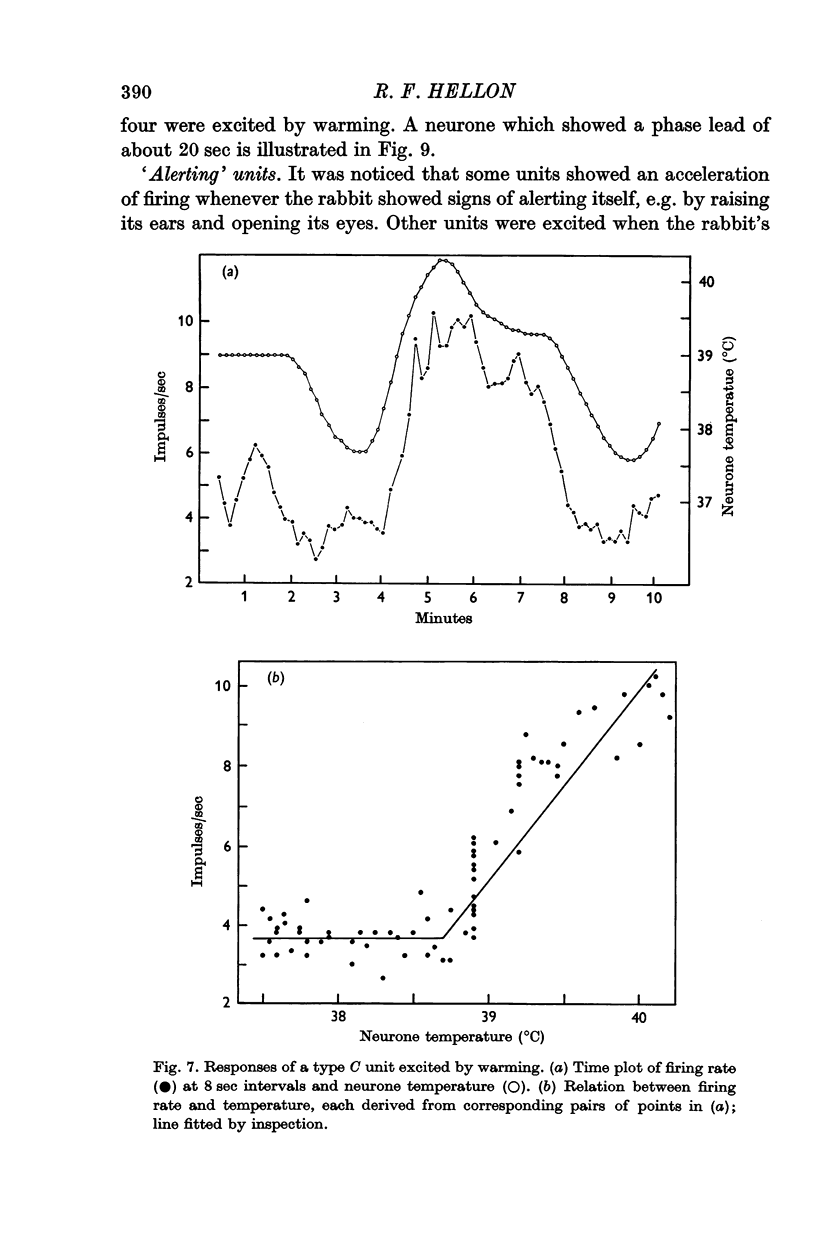
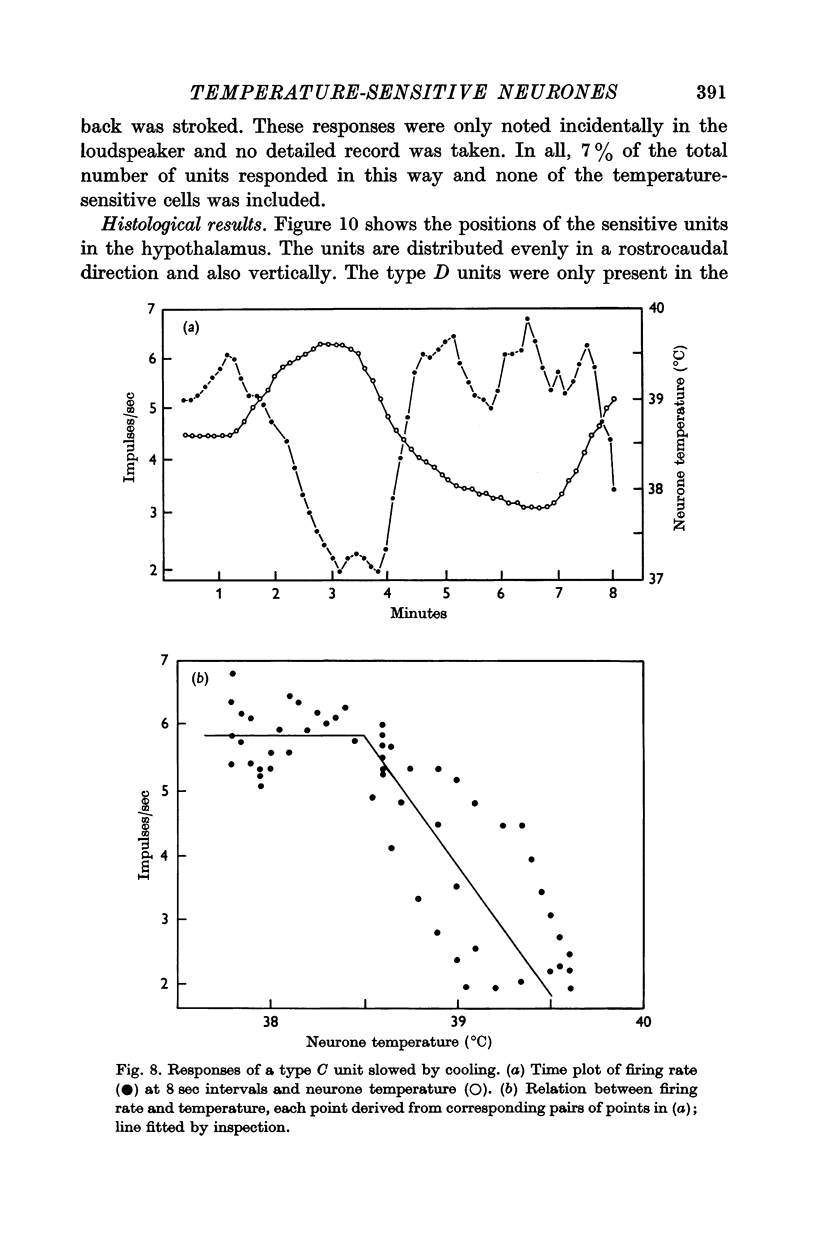
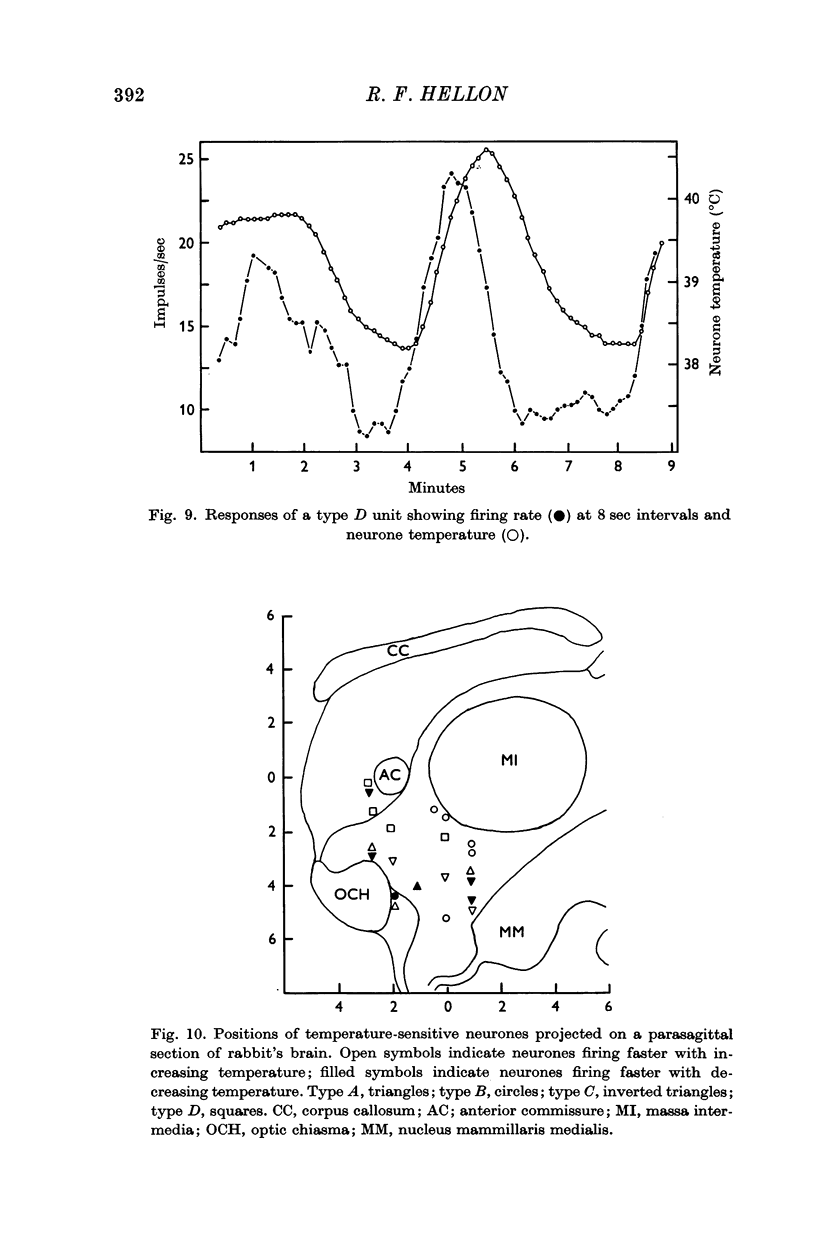
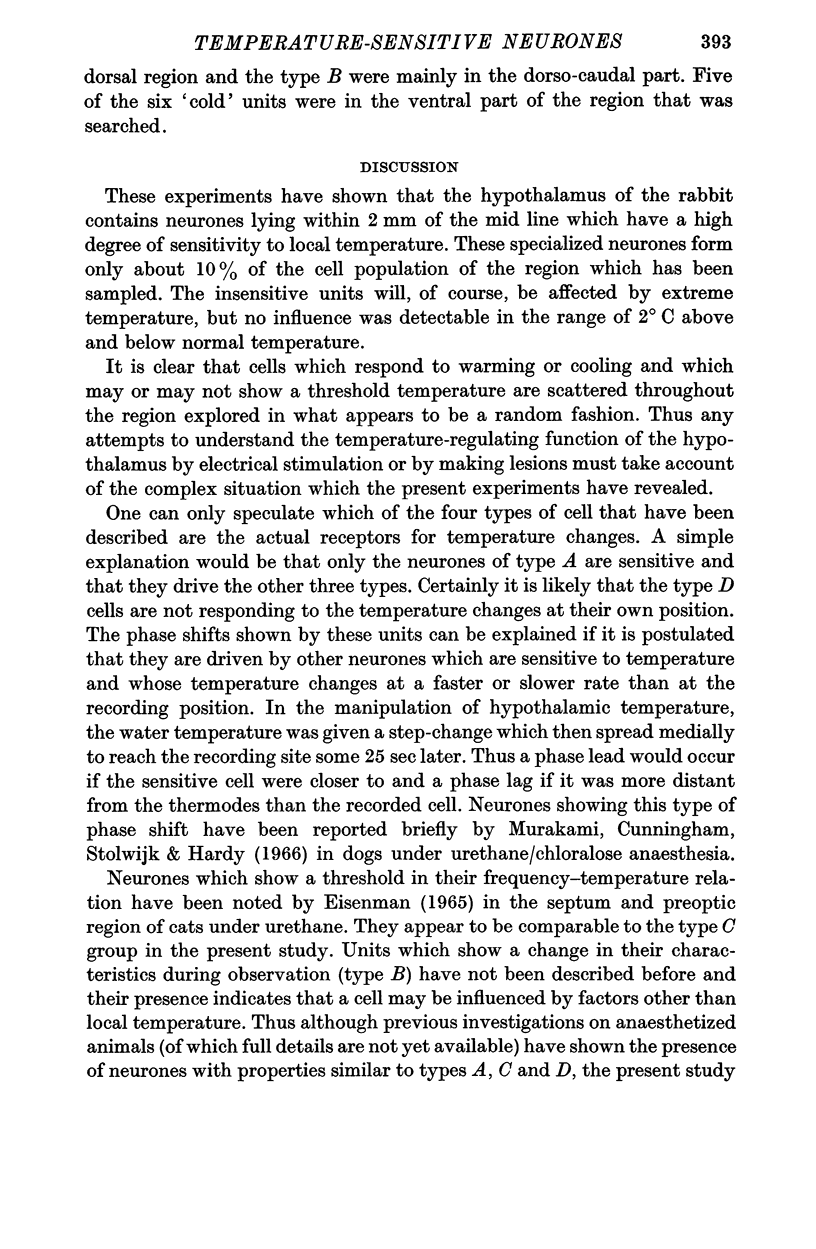
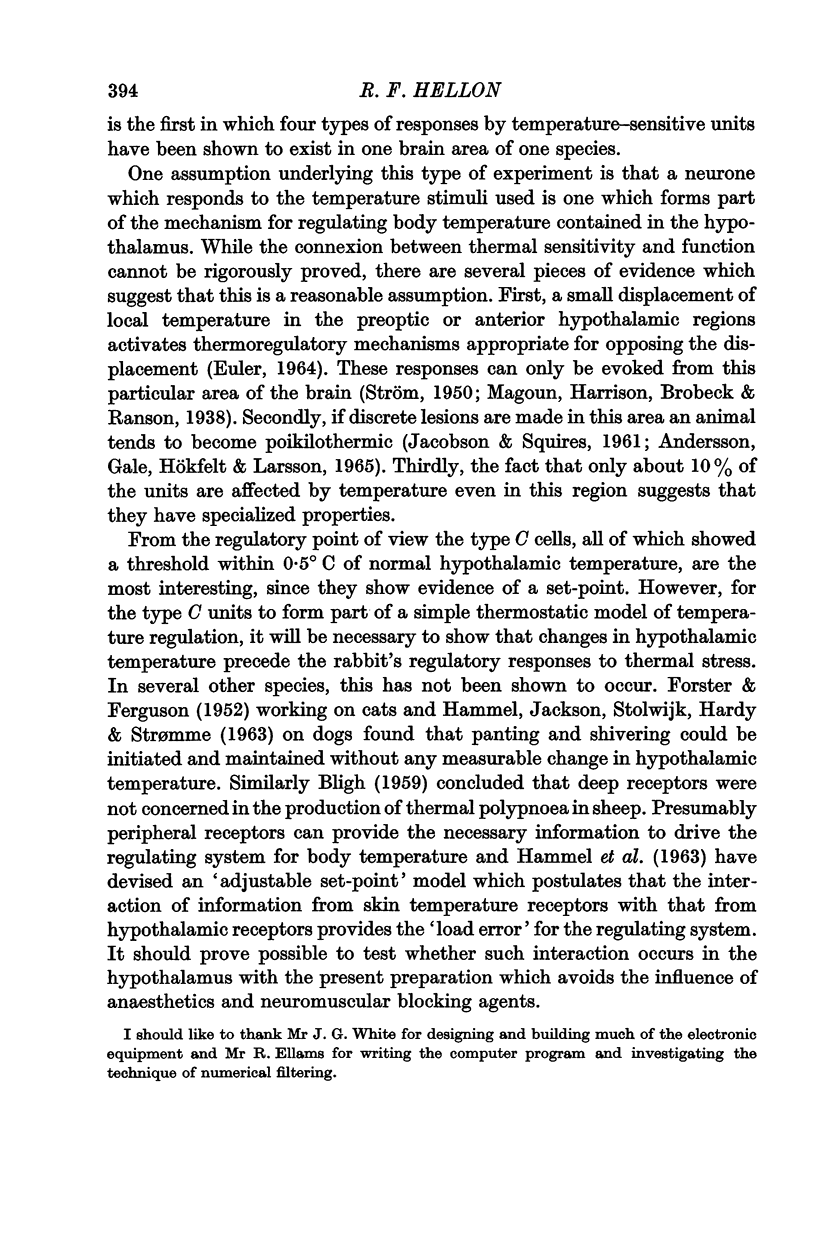
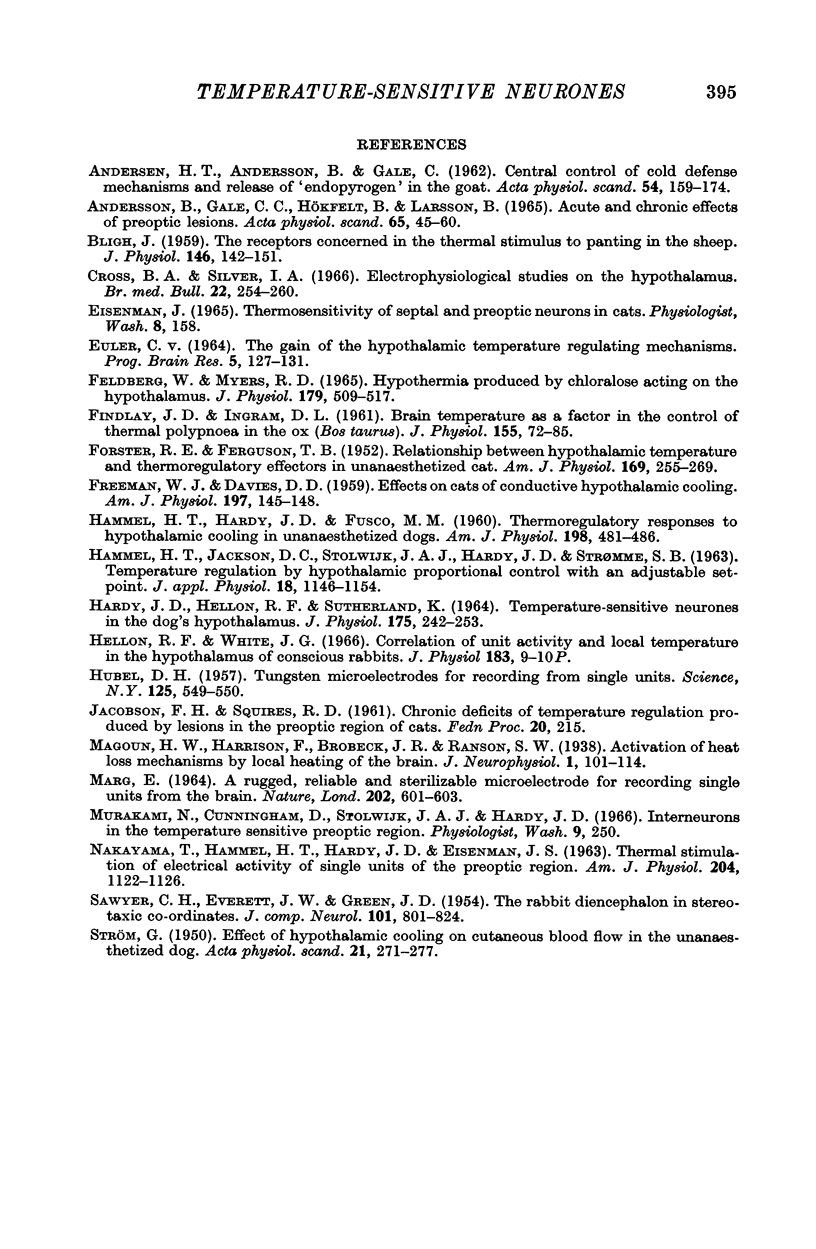
Selected References
These references are in PubMed. This may not be the complete list of references from this article.
- ANDERSEN H. T., ANDERSSON B., GALE C. Central control of cold defense mechanisms and the release of "endopyrogen" in the goat. Acta Physiol Scand. 1962 Feb;54:159–174. doi: 10.1111/j.1748-1716.1962.tb02341.x. [DOI] [PubMed] [Google Scholar]
- BLIGH J. The receptors concerned in the thermal stimulus to panting in sheep. J Physiol. 1959 Apr 23;146(1):142–151. doi: 10.1113/jphysiol.1959.sp006184. [DOI] [PMC free article] [PubMed] [Google Scholar]
- Cross B. A., Silver I. A. Electrophysiological studies on the hypothalamus. Br Med Bull. 1966 Sep;22(3):254–260. doi: 10.1093/oxfordjournals.bmb.a070483. [DOI] [PubMed] [Google Scholar]
- FINDLAY J. D., INGRAM D. L. Brain temperature as a factor in the control of thermal polypnoea in the ox (Bos taurus). J Physiol. 1961 Jan;155:72–85. doi: 10.1113/jphysiol.1961.sp006614. [DOI] [PMC free article] [PubMed] [Google Scholar]
- FORSTER R. E., FERGUSON T. B. Relationship between hypothalamic temperature and thermo-regulatory effectors in unanesthetized cat. Am J Physiol. 1952 May;169(2):255–269. doi: 10.1152/ajplegacy.1952.169.2.255. [DOI] [PubMed] [Google Scholar]
- FREEMAN W. J., DAVIS D. D. Effects on cats of conductive hypothalamic cooling. Am J Physiol. 1959 Jul;197(1):145–148. doi: 10.1152/ajplegacy.1959.197.1.145. [DOI] [PubMed] [Google Scholar]
- Feldberg W., Myers R. D. Hypothermia produced by chloralose acting on the hypothalamus. J Physiol. 1965 Aug;179(3):509–517. doi: 10.1113/jphysiol.1965.sp007677. [DOI] [PMC free article] [PubMed] [Google Scholar]
- HAMMEL H. T., HARDY J. D., FUSCO M. M. Thermoregulatory responses to hypothalamic cooling in unanesthetized dogs. Am J Physiol. 1960 Mar;198:481–486. doi: 10.1152/ajplegacy.1960.198.3.481. [DOI] [PubMed] [Google Scholar]
- HAMMEL H. T., JACKSON D. C., STOLWIJK J. A., HARDY J. D., STROMME S. B. TEMPERATURE REGULATION BY HYPOTHALAMIC PROPORTIONAL CONTROL WITH AN ADJUSTABLE SET POINT. J Appl Physiol. 1963 Nov;18:1146–1154. doi: 10.1152/jappl.1963.18.6.1146. [DOI] [PubMed] [Google Scholar]
- HARDY J. D., HELLON R. F., SUTHERLAND K. TEMPERATURE-SENSITIVE NEURONES IN THE DOG'S HYPOTHALAMUS. J Physiol. 1964 Dec;175:242–253. doi: 10.1113/jphysiol.1964.sp007515. [DOI] [PMC free article] [PubMed] [Google Scholar]
- Hubel D. H. Tungsten Microelectrode for Recording from Single Units. Science. 1957 Mar 22;125(3247):549–550. doi: 10.1126/science.125.3247.549. [DOI] [PubMed] [Google Scholar]
- MARG E. A RUGGED, RELIABLE AND STERILIZABLE MICROELECTRODE FOR RECORDING SINGLE UNITS FROM THE BRAIN. Nature. 1964 May 9;202:601–603. doi: 10.1038/202601a0. [DOI] [PubMed] [Google Scholar]
- SAWYER C. H., EVERETT J. W., GREEN J. D. The rabbit diencephalon in stereotaxic coordinates. J Comp Neurol. 1954 Dec;101(3):801–824. doi: 10.1002/cne.901010307. [DOI] [PubMed] [Google Scholar]
- STROM G. Effect of hypothalamic cooling on cutaneous blood flow in the unanesthetized dog. Acta Physiol Scand. 1950 Nov;21(2-3):271–277. doi: 10.1111/j.1748-1716.1950.tb00735.x. [DOI] [PubMed] [Google Scholar]


